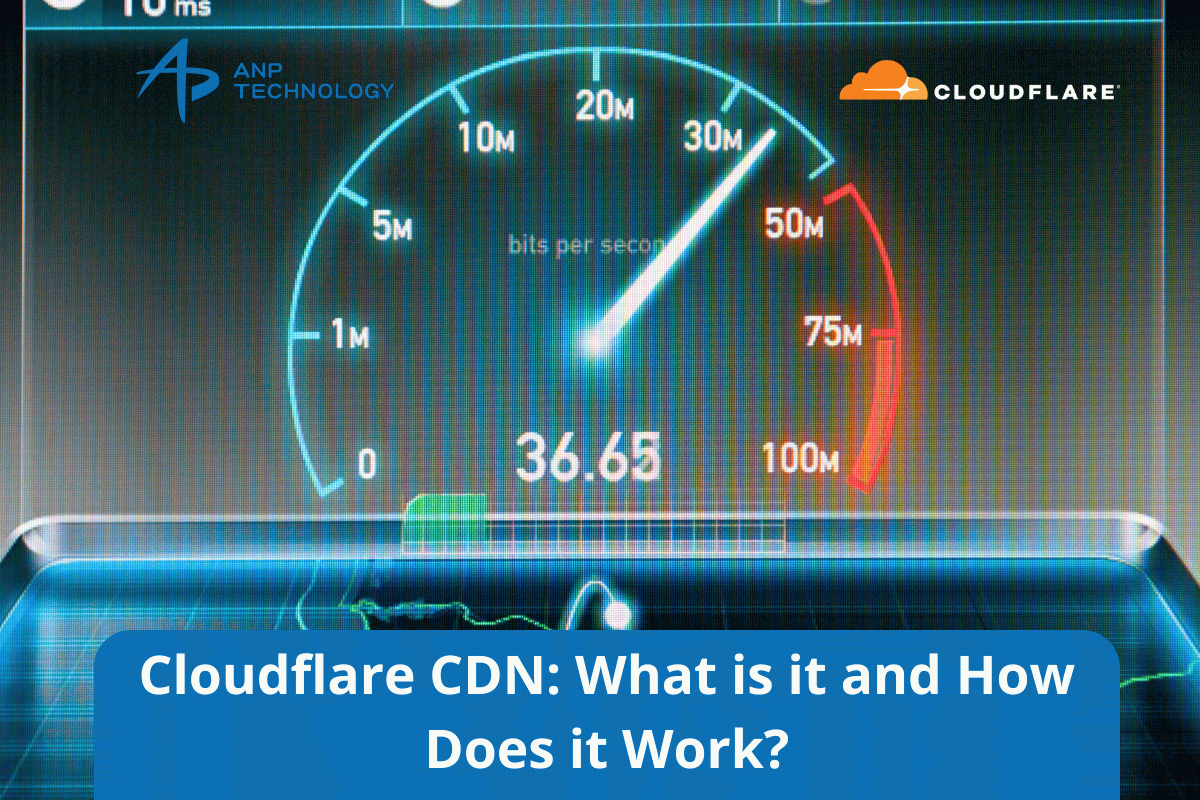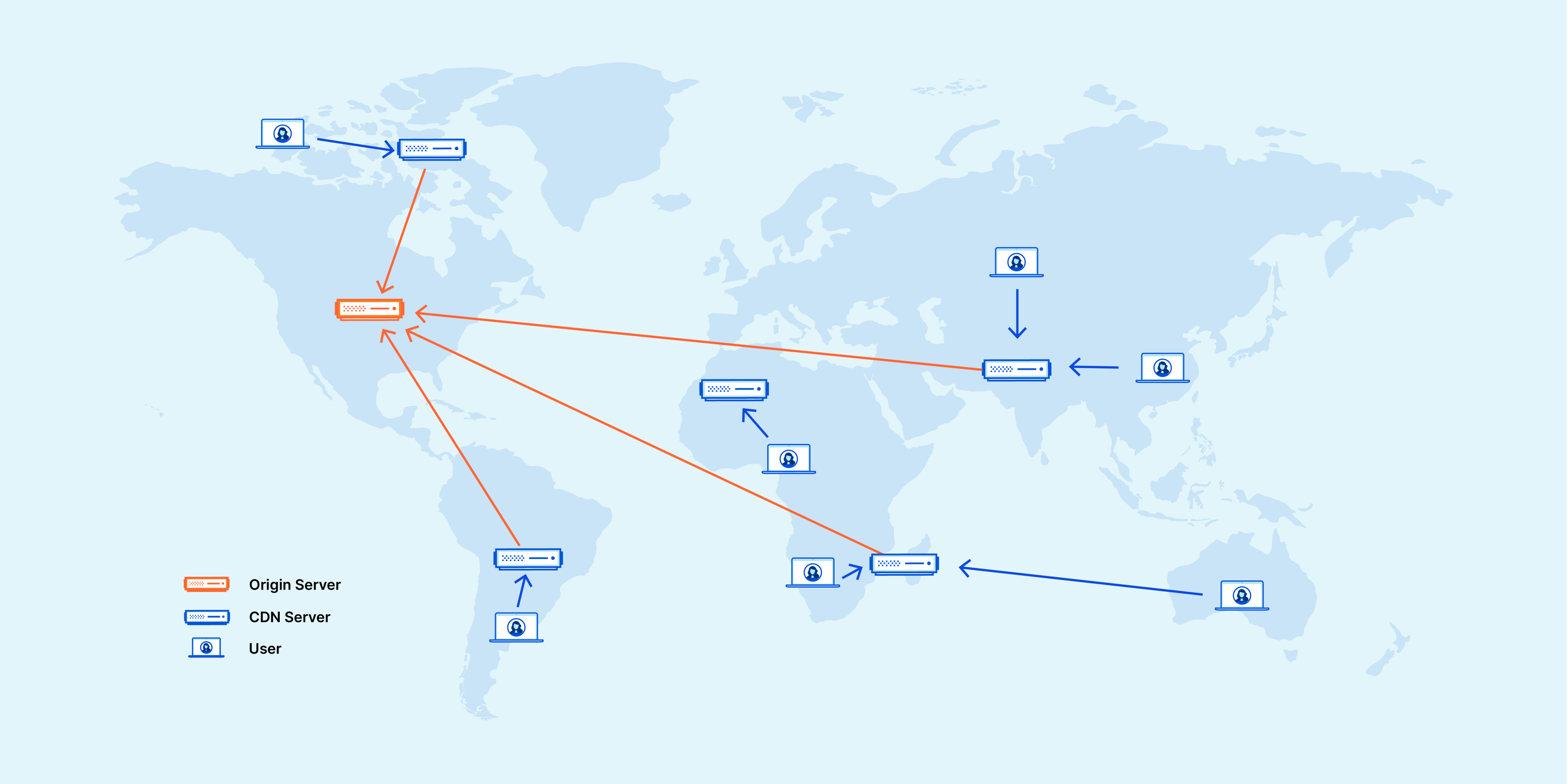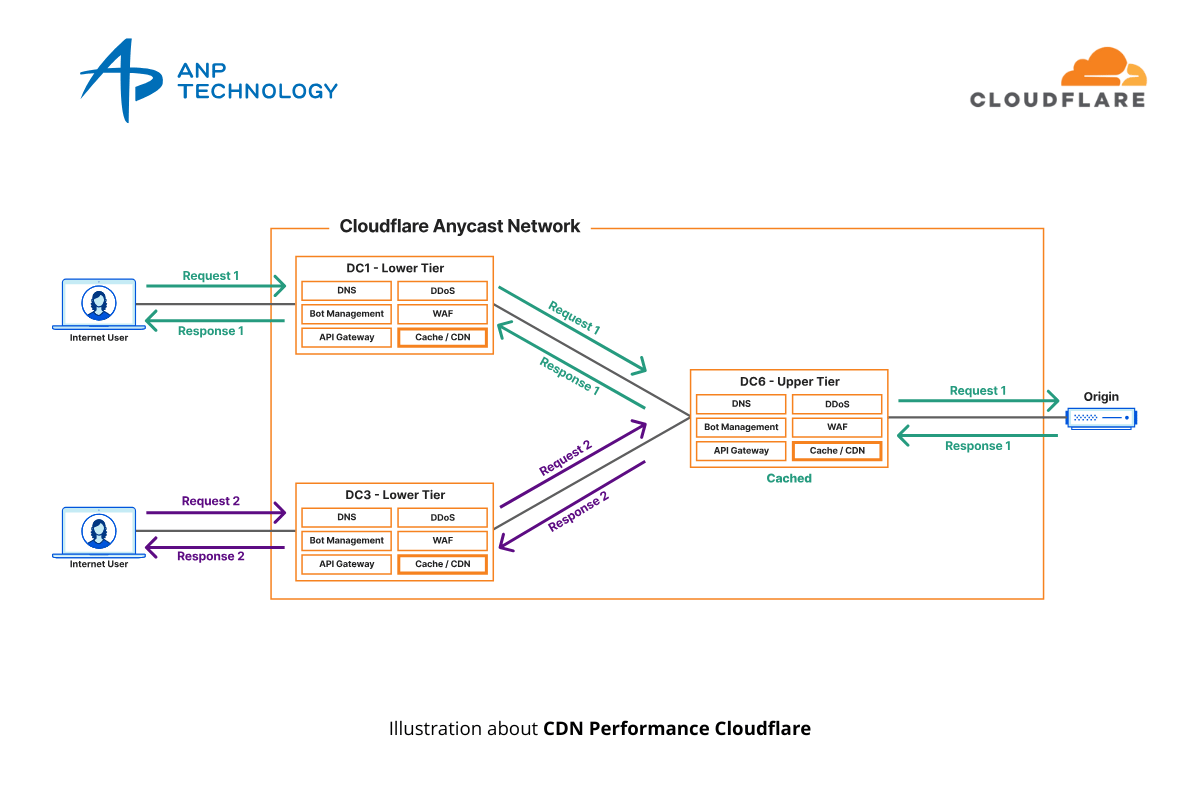
In the age of rapid digital transformation, speed and security have become pivotal factors for online success. Whether you’re managing a personal blog, running an e-commerce store, or overseeing a corporate website, ensuring your content loads fast while staying protected from cyber threats is essential. This is where Cloudflare, a leading Content Delivery Network (CDN), comes into play.
What is a Content Delivery Network (CDN)?

Before diving into what Cloudflare does explicitly, let’s first understand the concept of a Content Delivery Network (CDN).
A CDN is a network of geographically distributed servers designed to deliver content to users more efficiently. By caching and storing copies of static content (like images, videos, and scripts) on multiple servers worldwide, a CDN can serve this content from the closest server to the user, reducing latency and improving page load times.
CDNs are essential for optimizing web performance, particularly for websites with global audiences. They help reduce server load, minimize packet loss, and increase website reliability.
What is Cloudflare?
Cloudflare is one of the most popular CDN services globally. It provides a suite of web optimization tools that enhance website performance and security. Established in 2009, Cloudflare operates over 200 data centres worldwide, allowing it to serve content and protect websites from various threats efficiently.
While its CDN services are the most well-known, Cloudflare also offers additional tools such as:
- Web Application Firewall (WAF): Protects websites from malicious traffic and attacks.
- DDoS Protection: Shields websites from distributed denial-of-service (DDoS) attacks, which attempt to overwhelm websites with traffic.
- DNS (Domain Name System) Services: Provides a fast, secure, and reliable DNS service that ensures efficient website resolution.
- SSL/TLS Encryption: Offers free SSL certificates for secure data transmission, boosting trust and protecting user data.
How Does Cloudflare CDN Work?

Cloudflare’s CDN works by placing your website’s static content on its distributed servers around the world, making it accessible from the closest server to the user. This reduces the time it takes for data to travel, improving load times.
Here’s a step-by-step breakdown of how Cloudflare’s CDN functions:
- Request Routing: When a user visits your website, their browser sends a request to your domain’s DNS server. If your website is using Cloudflare, it routes this request through one of its global edge servers.
- Cache Lookup: Cloudflare’s edge servers check if they already have a cached version of the requested content. The cached content includes static assets like images, CSS files, JavaScript, videos, and more. If the content is already cached, the server responds with this content.
- Fetching from Origin Server: If the requested content is not cached, Cloudflare will fetch it from your origin server (the original server where your website is hosted). The content is then delivered to the user from the closest Cloudflare Edge server and cached for future use.
- Caching and Revalidation: Cloudflare continues to store copies of the content on its edge servers for a specific period. It periodically checks with the origin server to ensure that the cached version of the content is up-to-date. If changes are made to the content, Cloudflare fetches the new version and updates the cache.
- Security Features: Along with content delivery, Cloudflare enhances security by filtering out malicious traffic through its WAF and DDoS protection. It monitors incoming requests and ensures that any suspicious activity is blocked, thereby safeguarding your site from cyberattacks.
Key Features of Cloudflare CDN
Cloudflare’s CDN (Content Delivery Network) is one of the most widely used in the world, powering millions of websites with fast, secure, and reliable content delivery. Here’s a breakdown of its key features:
- Global Coverage: Cloudflare has a robust network of data centres spread across over 200 locations worldwide, making it one of the largest CDNs in the market. This extensive network ensures that content is delivered quickly, no matter where your visitors are located.
- Speed Optimization: Cloudflare optimizes website speed by caching static content at edge servers and reducing the number of hops needed to fetch content from the origin server. This results in lower latency and faster page load times.
- Automatic Content Optimization: Cloudflare automatically optimizes images and compresses files for faster delivery. It supports features like automatic image resizing, image compression, and JavaScript optimization to enhance site speed further.
- Security and DDoS Protection: Cloudflare offers robust DDoS protection that can handle even the largest attacks, ensuring your website remains online even during a cyberattack. It also includes features such as SSL encryption and a Web Application Firewall (WAF) to protect against malicious threats.
- Free SSL Certificates: Cloudflare provides free SSL certificates, ensuring that data between your users and your website is encrypted and secure.
- Load Balancing: For websites with high traffic, Cloudflare offers load balancing, distributing incoming traffic across multiple servers to prevent overload and ensure availability.
- Analytics: Cloudflare provides detailed analytics about the traffic your website receives, including visitor locations, traffic volume, and potential security threats. This helps you monitor website performance and security effectively.
Read more : How to deal with DDoS Attack with Cloudflare
Benefits of Using Cloudflare CDN
Here are the top benefits of using Cloudflare CDN, broken down into clear, real-world advantages for website owners, developers, and businesses:
- Improved Website Performance: Cloudflare’s CDN ensures faster content delivery by serving cached content from edge servers near your users, which results in quicker page load times and improved overall user experience.
- Reduced Latency: With servers located across the globe, Cloudflare minimizes the time it takes to send and receive data between your server and users, making websites responsive and faster.
- Increased Website Security: Cloudflare’s security features, like DDoS protection, WAF, and SSL/TLS encryption, ensure that your website is protected from cyberattacks and data breaches.
- Scalability: Cloudflare makes it easier to scale your website by distributing the load and ensuring that additional traffic doesn’t impact performance. Its load-balancing feature helps handle large amounts of traffic seamlessly.
- Reduced Bandwidth Costs: By caching content at edge servers and optimizing delivery, Cloudflare minimizes the load on your origin server, saving bandwidth and reducing hosting costs.
Conclusion
Cloudflare’s CDN offers an efficient and cost-effective solution for enhancing website performance and security. By caching content across its global network of edge servers, Cloudflare ensures faster loading times, reduced latency, and enhanced user experience. Furthermore, its robust security features protect websites from cyber threats like DDoS attacks and malicious traffic. Whether you’re running a personal blog or a large-scale enterprise website, integrating Cloudflare CDN can help you deliver content faster, more securely, and at scale.
If you need protect and best performance for your website for your Company or organization, contact us here for more information.
